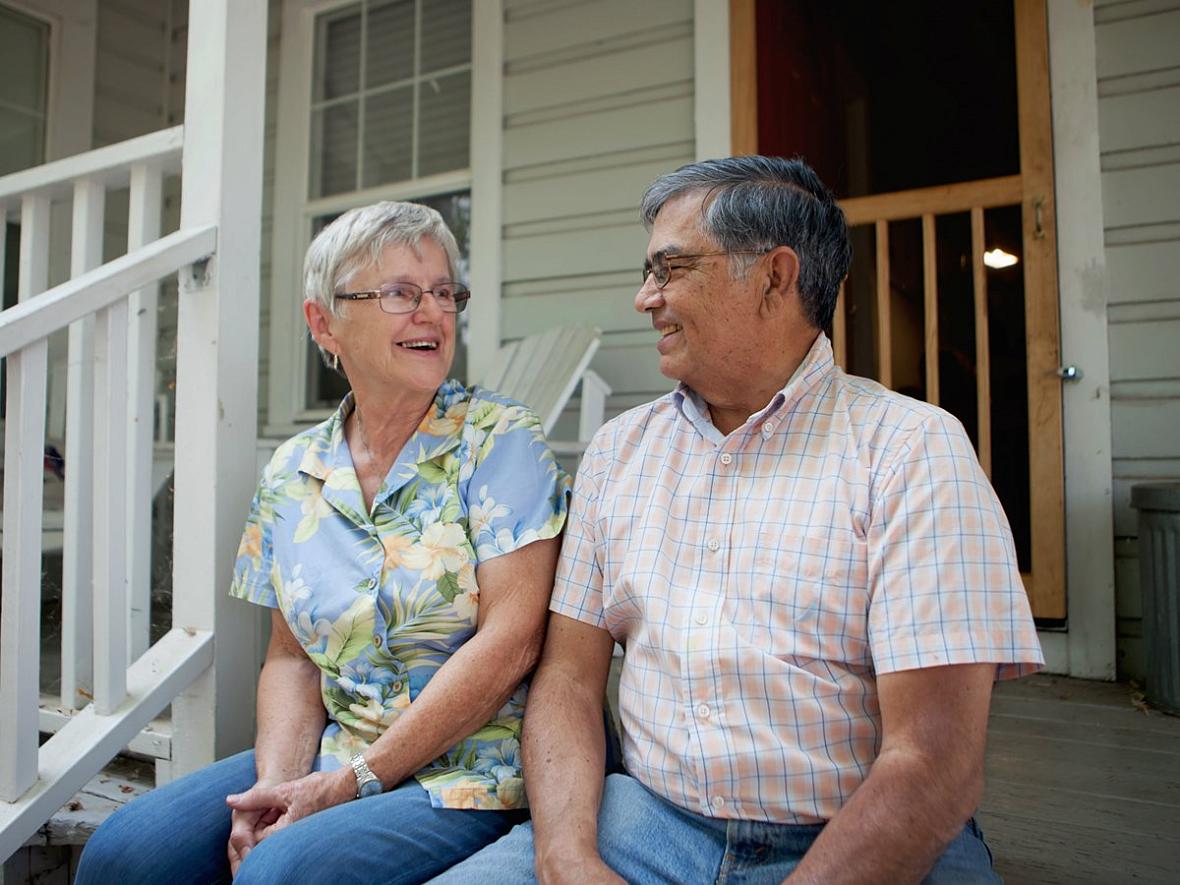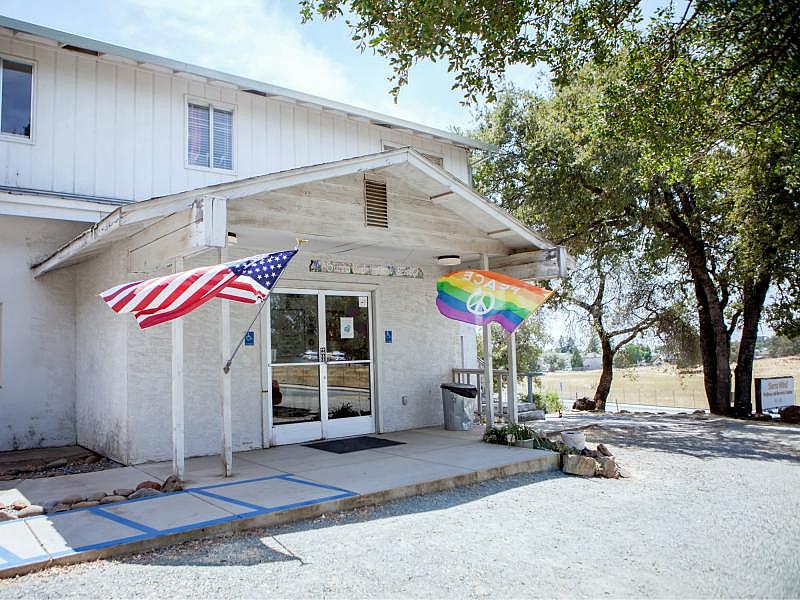How Suicide Trainings, Community Connections Could Patch Holes In Amador’s Mental Health Safety Net
This story was produced as a project for the 2018 California Fellowship, a program of the Center for Health Journalism at USC Annenberg.
Other stories in this series include:
Why Veterans Face Heightened Suicide Risk in Amador County and Other Rural Areas
Where are the psychiatrists? Amador County and rural California hit hardest by physician shortage
CapRadio Healthcare Reporter Examines Rural Suicide In Amador County
Dying To Get Out: Stigma, ‘Copycat Effect’ Drive Youth Suicide In Rural Amador County
Chronic Loneliness Is A Major Cause Of Suicide For Seniors, Especially in Rural California
Q&A: How CapRadio Found Data On Suicides In Amador County
The ‘S’ Word: How Suicide Is Devastating Amador County And Rural Communities

Terri Works and Andy Rodriguez have been running the small but active Amador chapter of the National Alliance on Mental Illness for about three years. (Photos: Vanessa S. Nelson/Capital Public Radio)
The WellSpace Health clinic in the small Sierra foothill town of Jackson is shiny and still, like a newly built house patiently awaiting inhabitants. Since it opened less than a year ago, it’s gradually served more patients in the area, trying to fill a long-standing gap in providers that many residents say contributes to Amador County’s high suicide rates.
The clinic, which receives federal dollars to serve patients regardless of their insurance coverage, is mainly set up for regular doctor’s visits. But regional manager Cathy Frey said she knows it will play an important role in fulfilling Amador County’s unmet mental health needs.
Many people who come in for chronic illness also have a behavioral health issue, “which is why our behavioral program has been so busy,” she said.
“We’ve done many referrals, whether they’re depressed or unhappy or just need someone to talk to,” Frey added.
The hope is that drawing more patients in for primary care will give physicians a chance to ask about mental health. It could be a first step toward strengthening a safety net that residents say is too weak to hold the weight of someone in suicidal crisis.
Amador County has the third-highest suicide rate in the state, according to the California Department of Public Health. It’s nearly three times the state average and twice the rate in Sacramento. (Read more about the reasons why here.)
That’s why Stephanie Hess is determined to change the landscape around suicide prevention. She’s the county’s Mental Health Services Act coordinator, and is in charge of spending leftover dollars from the state’s Proposition 63 millionaire tax.
“I would like to see the outreach efforts have a significant effect on reducing our suicide rate,” she said.
When a county doesn’t use their allocated Prop. 63 dollars within three years, the money then reverts to the state, which redistributes it to other counties. A February state audit found counties had amassed $2.5 billion in unspent funds.
Rural counties are more likely to have trouble using the funds if they lack the staff support to execute new programs. That’s part of the reason why lawmakers are trying to change the rules to make it easier for counties to spend the money.
The Amador County board of supervisors has to approve Hess’ proposals. Supervisor Lynn Morgan said the board is just starting to see mental health as an urgent issue. Her own son died by suicide, and that’s driven her to push for more resources. But she said social services are a hard sell when the county is focused on boosting tourism.
“What was being prioritized was the economic health of the county,” Morgan said of the board. She says they would ask, “‘How many houses were being built? How many people were coming here?’
“There aren’t jobs here, there aren’t opportunities, it’s just not a productive place to be,” she added.
Many mental health leaders in the county are pushing to train community members — from church leaders to grocery store clerks — so they can identify suicide signs and know how to respond. It’s sort of like first aid for mental health. Hess and other county staff got approval this May to dedicate $33,000 in state mental health dollars for this effort.
Nexus Youth and Family Services, a local nonprofit organization, will lead some of the upcoming trainings. They’ve already been teaching a similar course that helps people spot suicide signs. The brightly lit, two-story Sierra Wind Wellness and Recovery Center in Jackson serves a well-attended free lunch every weekday and offers a support group for almost everything — Alcoholics Anonymous, bipolar disorder, LGBT support. There aren’t any therapists or psychiatrists, so staff refer guests who need more advanced help to the county health department.
Many people are hesitant to reach out to friends and family about suicidal thoughts because they don’t feel qualified to handle the situation. Bob White, with the YES Partnership in nearby Tuolumne County, said community training can help people feel more confident in reaching out.
He said Tuolumne has used Mental Health Services Act dollars over the last five years to train more than a thousand community members in “safe talk,” another type of training that makes people alert to suicide risk. They also have a separate suicide training for physicians. Tuolumne County has the state’s sixteenth highest suicide rate.
“We have been very assertive and aggressive in courting as many people as possible to attend our trainings,” White said.
He said community members come out of the training knowing how to talk about suicide and how to connect people to help.
In Amador, Hess is also putting the Prop. 63 funds to use for specific at-risk groups: mothers suffering from depression, teens with mental health challenges and substance abuse disorders. She’s looking for ways to better integrate services with the veterans groups in the areas, and trying to sign up more Medi-Cal patients at a local community center that largely serves homeless people.
And she’s using about $44,000 for quarterly mental health awareness events, such as fun runs and movie nights, for populations at heightened suicide risk, including teens, older adults and middle-aged men.
She said that while many people need immediate access to a mental health professional, others just need a support network. Having someone to talk to is sometimes all it takes to give thema reason to live.
One place to connect with neighbors is the Sierra Wind Wellness and Recovery Center in Jackson, where people gather Monday to Friday for free lunch and support groups.It's partially funded by the Mental Health Services Act through Amador County Behavioral Health Services.
Another place to find support is the National Alliance on Mental Illness Amador chapter. The group holds weekly gatherings that connect people to others who understand what they’re going through. There are sessions for family members, too.
Andy Rodriguez and Terri Works have been running the small but active Amador chapter for about three years. They got involved shortly after Rodriguez tried to take his own life, and then got a diagnosis for bipolar disorder and depression.
He said the attempt feels like a very long time ago. He’s on medication now, and drives to Sacramento for regular treatments. But like any mental illness, it never really goes away.
“You can’t cheer up,” he said. “You aren’t necessarily unhappy because of something in your life. You just have the depression. It’s like telling somebody with a cold to stop sniffling.”
Works said the only thing to do is to give people something to lean on while they push through the muck.
“You’re not alone,” she said. “And it’s not your fault. And you’re not gonna be able to fix it, but you can make it better.”
If you’re thinking about suicide or know someone who is, call the national suicide prevention lifeline at 1-800-273-8255.
[This story was originally published by Capital Public Radio.]

